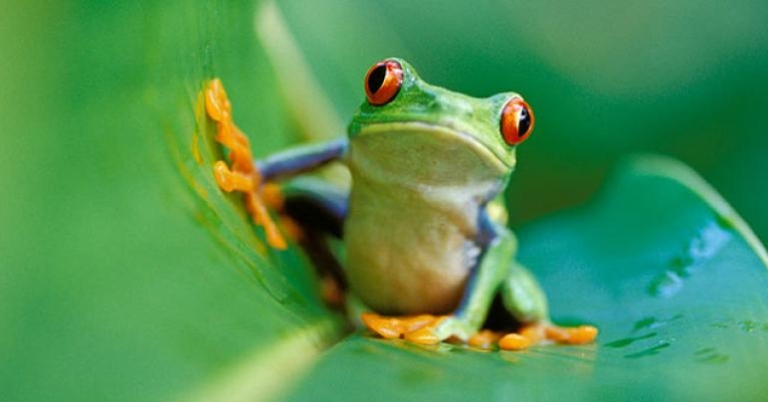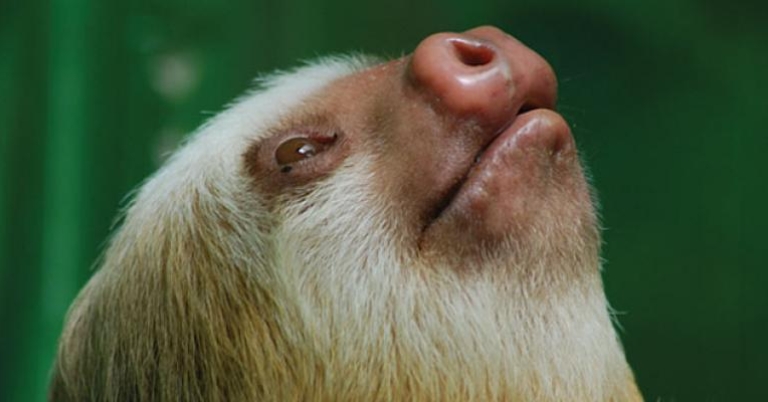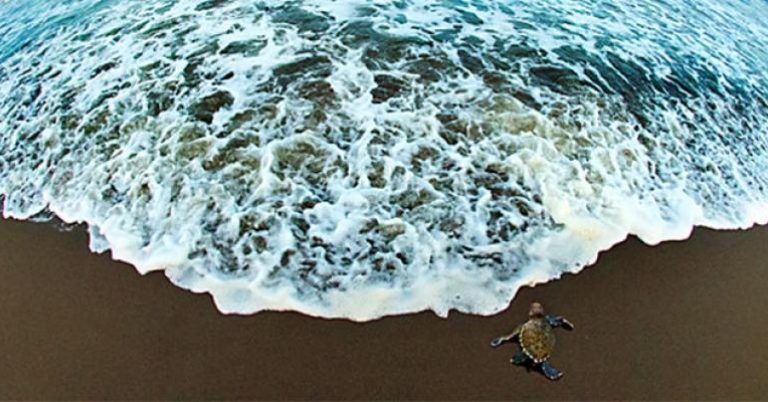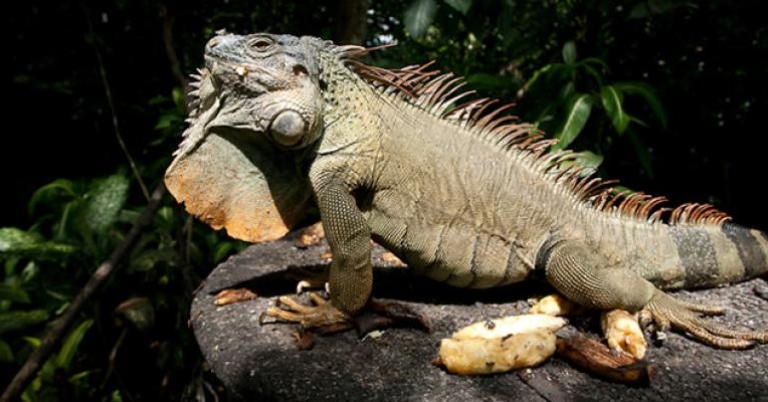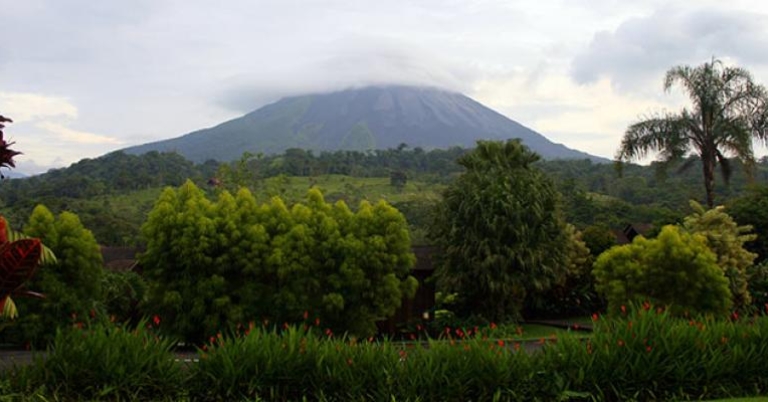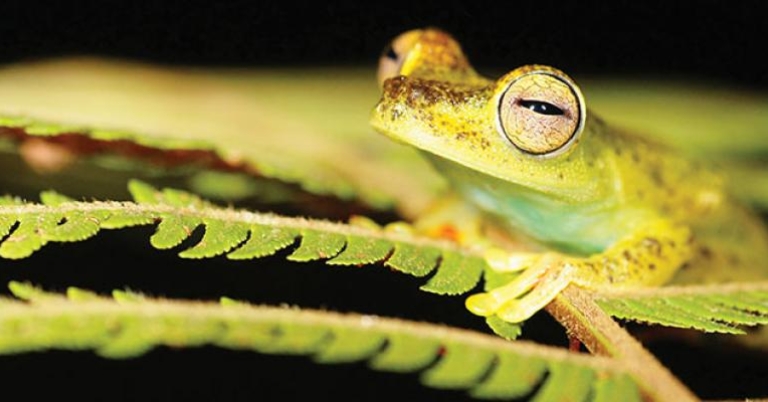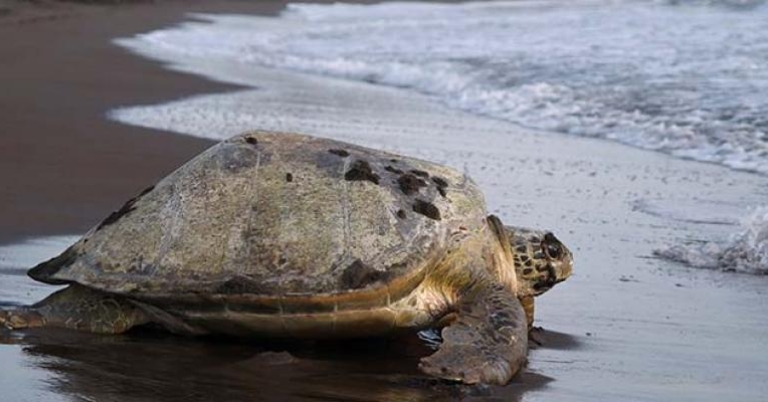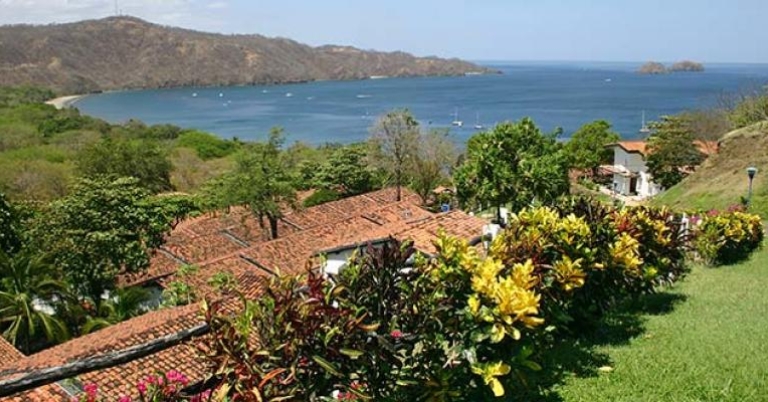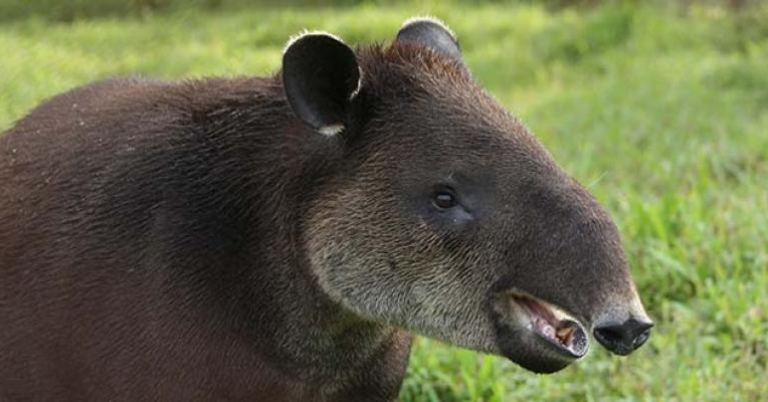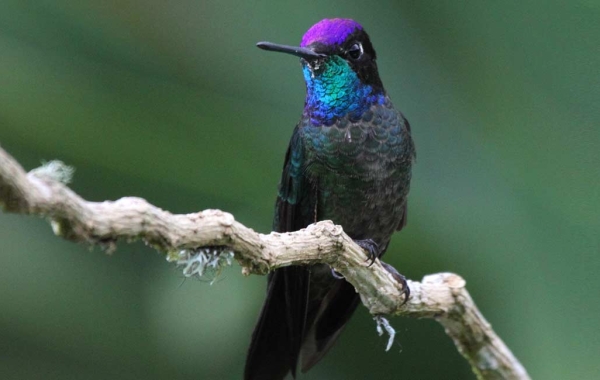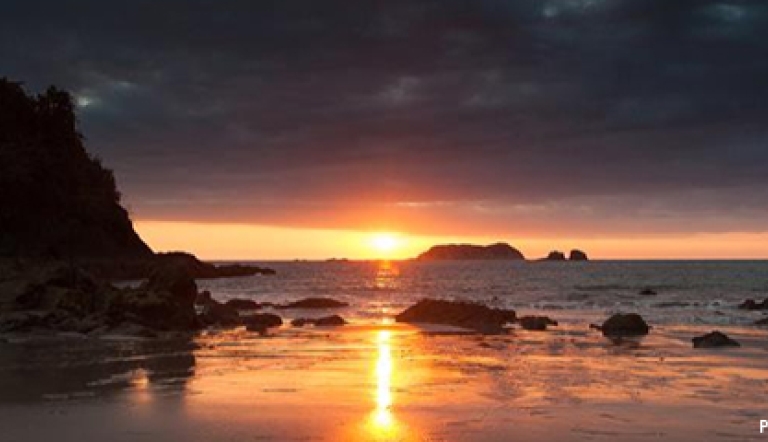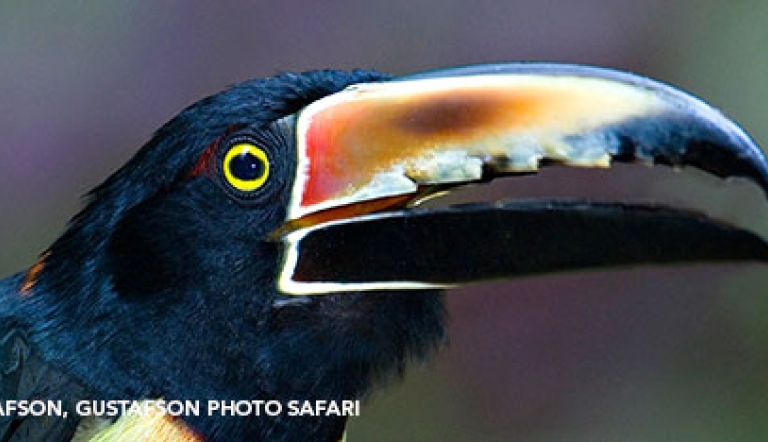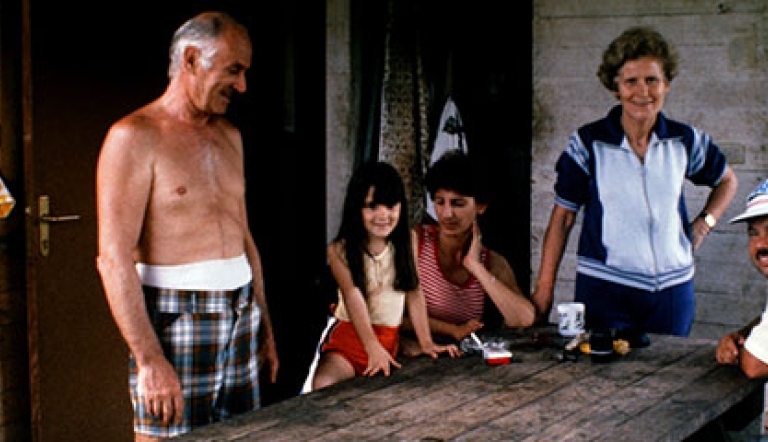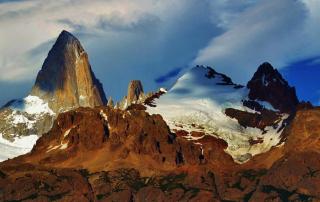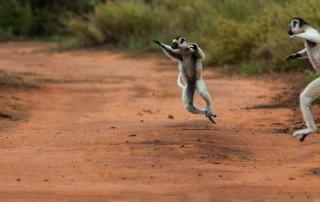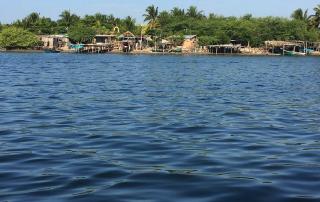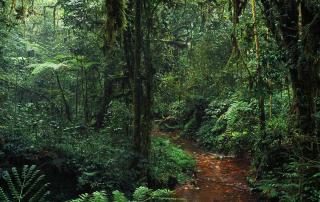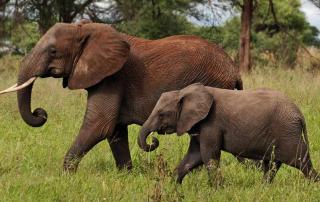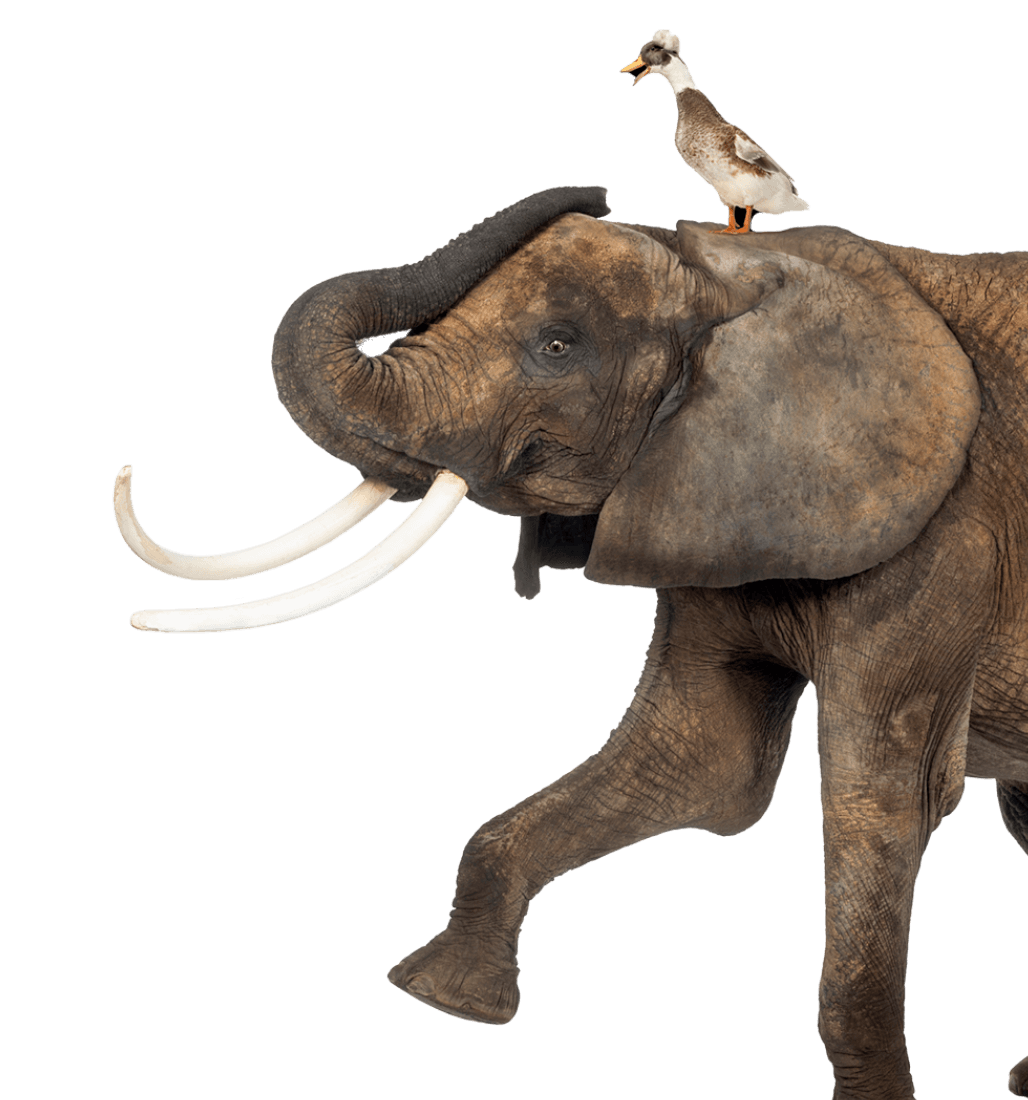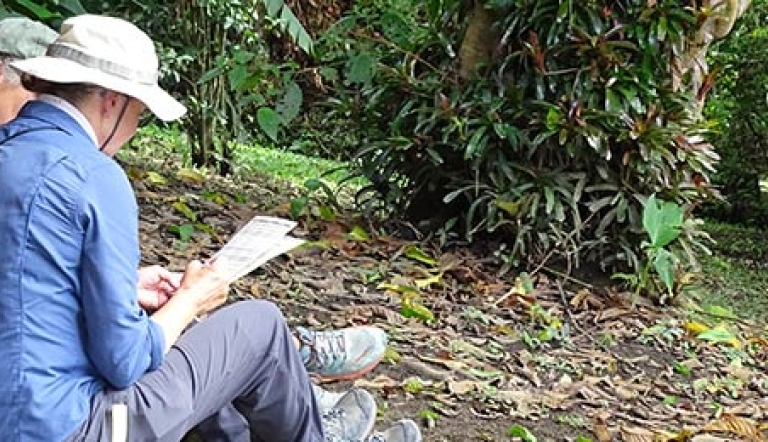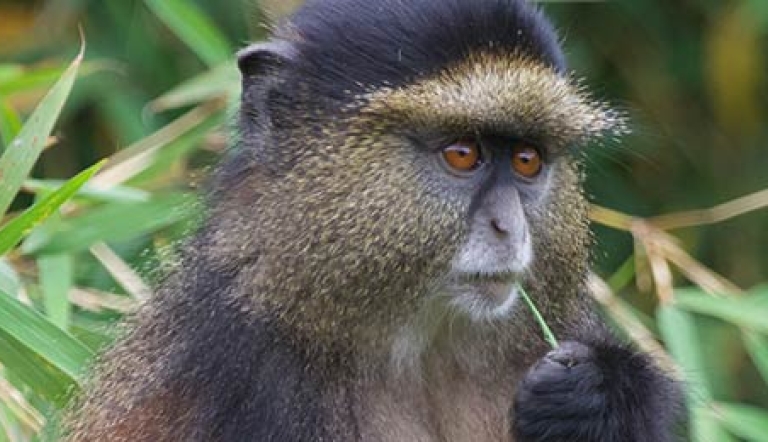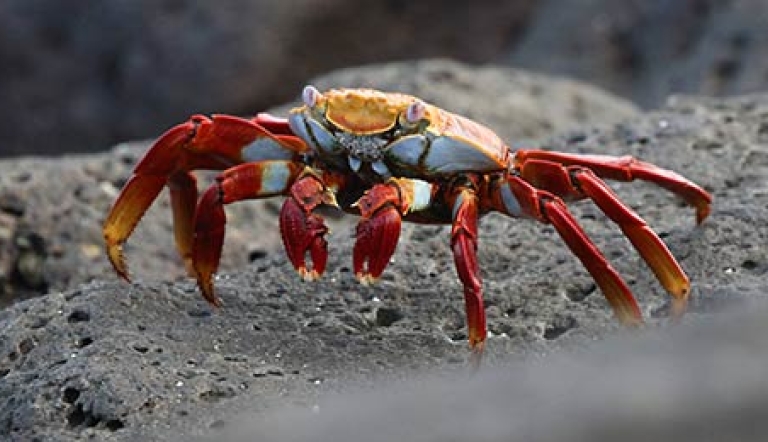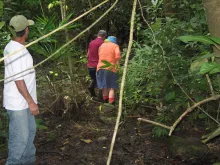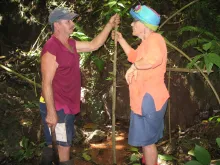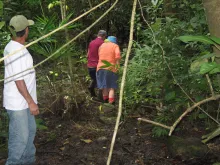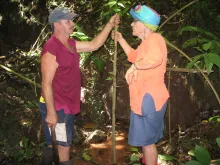In fact, it is possible to see more wildlife in one day in Costa Rica than in a whole Amazon experience.
Whether in cloud forest, Caribbean lowland rainforest, arid mountain peaks, dry Pacific forests, mangroves or coral reefs, the beauty of Costa Rica is authentic and accessible. The country’s natural wealth is no accident. In the mid-20th century, Costa Rican leadership took to the idea of conservation as the future of the nation. Now, 23 percent of Costa Rica’s land mass is under preservation. Rather than devote resources to developing a military, Costa Rican officials chose to build educational and social security programs. Despite the ensuing growth of tourism, the country remains peaceful, friendly and open. Costa Ricans continue to exude appreciation and joy for the treasures of their country.
Holbrook shares that appreciation, and plays an active part in preserving Costa Rica’s natural resources. As a result of leading many guided birding tours to view some of the country’s 900-plus bird species, including toucans, macaws, motmots, quetzals and trogons, Holbrook founded the Selva Verde Lodge in the mid-1980s. Today the lodge protects 500 acres of primary forest in the Sarapiquí region. Travel with Holbrook and you benefit from the company’s close relationship with the country. Knowledgeable local experts, who are enthusiastic about showing the intricate beauty of their country, lead Holbrook`s Costa Rica guided tours.
Costa Rican officials continue to address conservation issues that may stem from their initial success in drawing international attention to their country’s astounding biodiversity. Experts are examining and setting carrying capacities and creating platforms of regulations so that the natural wealth is not harmed by visitors or by development but rather protected for the future. Holbrook seeks to ensure that sustainable tourism, authentic exchange, rich local knowledge, and environmental service are imparted and paramount to our travels in Costa Rica.
Natural Wonders
Costa Rica’s natural wonders include hundreds of endemic plant and animal species, landscapes shaped by volcanoes and mighty rivers, rich marine habitats, and diverse ecosystems. Furthermore, the country is considered to have the greatest known species density in the world. The lush flora and fauna are found across a variety of habitats and ecological zones. Costa Rica has more than 150 protected areas that make up part of the Mesoamerican Biological Corridor, a multinational initiative to protect endangered species. Explore Costa Rica on guided rainforest hikes to observe some of the country’s best-known species, like sloths, monkeys, and brightly colored frogs, while learning how resident species have adapted to their habitats. Thanks to its diverse ecosystems and abundant wildlife, Costa Rica is also a perfect backdrop for both amateur and professional nature photographers to practice their craft.
The country’s geological diversity is also exceptional; hundreds of its formations throughout the country have resulted from volcanic forces, offering a firsthand look at how the face of the earth continues to be shaped. Here you can hike lava fields, explore the different types of volcanoes that make up the landscape, and experience geothermal activity at work in the many hot springs.
Costa Rica’s natural wonders are not limited to land: In Costa Rica’s waters, nearly 7,000 marine species, or 3.5 percent of all aquatic life on Earth, can be found. Costa Rica is bounded by the Caribbean Sea to the east and the Pacific Ocean to the west, providing multiple opportunities to explore marine life and coastal habitats. Take a boat ride among mangrove swamps, look for humpback whales and dolphins at Caño Island, and examine how researchers are protecting sea turtles from poachers and other threats.
Birds
Birding in Costa Rica is an extraordinary experience; with more than 900 species recorded, the country offers great birding opportunities within relatively short distances, involving very diverse habitats in the six ornithological regions of the country. The country’s many protected areas and commitment to sustainability provide habitat for native and migrant birds alike. With the help of our expert guides, look for star species such as the Blue-crowned Motmot, Keel-billed Toucan, Boat-billed Heron, and hummingbirds like the diminutive Snowcap and hefty Violet Sabrewing. Journey into cloud forests to maximize the chances of spotting area specialties, including the Resplendent Quetzal. Trogons, tanagers, honeycreepers, and oropendolas are also plentiful. In the highlands shared with neighboring Panama, a multitude of regional endemics can be found, such as the Long-tailed Silky-flycatcher, Prong-billed Barbet, and Flame-throated Warbler. Whether you’re interested in high intensity birding or a more laid back approach, we can customize the right birding program for you.
Environmental Studies & Conservation
Costa Rica has been a global pioneer in preserving its natural resources, serving as a model for other countries around the world. Nearly 25 percent of the country’s land is protected in national parks and privately owned reserves, and roughly 90 percent of its electricity is generated from renewable resources. Costa Rica’s dedication to becoming a carbon-neutral country and its government-enacted measures to preserve its natural resources make it an ideal destination for learning more about conservation in action.
With Holbrook, you can tailor your experience to your interests: Meet with ecologists and learn about current conservation initiatives, or learn about sustainable agriculture at an organic, shade-grown coffee plantation. Take part in a reforestation project and discuss how the Costa Rican government incentivizes private land conservation. Meet with coordinators of a not-for-profit trash mapping project, or discover how scientists are studying endangered species at field research stations. Take part in a surf lesson or yoga session at a beach community while discussing how locals connect with the ocean and about the philosophies its residents live by to conserve their natural resources.
Service Learning & Citizen Science
Holbrook Travel offers opportunities for hands-on community service and citizen science, and our projects are always tailored to the ever-changing needs of the community in order to have the most meaningful impact. We have developed long-standing relationships with local organizations to ensure the most benefit for everyone involved.
Assist in conservation efforts by participating in a reforestation project; take part in nightly sea turtle patrols with the Sea Turtle Conservancy to mark nests, count eggs, and learn about turtle breeding behavior; use technology in the field to collect and analyze environmental data; visit field stations and learn from resident scientists about research being conducted; help monitor hummingbird migrations with Operation Rubythroat; or visit with local schoolchildren to help build playgrounds or plant school gardens: these are just a few of the possibilities.
Selva Verde Lodge & Rainforest Reserve
Holbrook’s own Selva Verde Lodge and Rainforest Reserve in the Sarapiquí Valley protects 500 acres of primary and secondary rainforest. The ecolodge, which is recognized with a level four Certification for Sustainable Tourism by the Costa Rican Tourism Board, is a popular base for exploring the surrounding region and provides habitat for the endangered Great Green Macaw.
Entry & Exit Requirements
U.S. and Canadian citizens must have a valid passport to enter Costa Rica. Passports must be valid for at least the duration of your stay. As this requirement is subject to change at any time without notice, we recommend at least 6 months' validity.
A visa is not required for visits up to 30 days.
If you are not traveling with a U.S. passport, please check with the Costa Rican Embassy for the requirements based on your nationality.
Health Information
IMMUNIZATIONS
The Centers for Disease Control recommends that all travelers be up to date on routine vaccinations such as measles-mumps-rubella (MMR) vaccine, diphtheria-pertussis-tetanus vaccine, varicella (chicken pox) vaccine, and your yearly flu shot before every trip.
There are no vaccinations required for entry into Costa Rica, unless you are traveling from an endemic yellow fever area within six weeks prior to entry.
Some physicians recommend that travelers get hepatitis A and typhoid vaccines before visiting Costa Rica.
Please consult your physician for additional information and recommendations based on your individual circumstances.
MALARIA
The CDC warns that travelers to Central America may be at risk for exposure to malaria. Malaria is caused by a parasite found in Anopheles mosquitos, which are active from dusk until dawn. Prevention is twofold: the use of anti-malarial drugs and the prevention of insect bites. If you choose to use an anti-malarial drug, as recommended by the CDC, see your physician for a prescription.
CHIKUNGUNYA
In June 2014, El Salvador reported locally transmitted cases of chikungunya in Central America. Local transmission means that mosquitoes in the area have been infected with chikungunya and are spreading it to people. Local transmission of chikungunya is now being reported in other countries in Central America. CDC recommends that travelers to the Central America area protect themselves from mosquito bites.
ZIKA VIRUS
Locally transmitted cases of Zika virus have been reported in Costa Rica. Local transmission means that mosquitoes in the area have been infected with Zika and are spreading it to people. The CDC recommends that travelers to Costa Rica protect themselves from mosquito bites. As a precaution, the CDC advises women who are pregnant to consider postponing travel to any area where Zika virus transmission is ongoing.
SUN EXPOSURE
The effects of the sun can be damaging to the eyes and skin. Spending time outdoors exposes you to the sun’s harmful ultraviolet (UV) rays, even on cloudy days. To protect yourself from the sun, use a broad spectrum sunscreen of at least SPF 15, protect skin with clothing, wear a wide-brimmed hat and sunglasses, and drink plenty of fluids.
Currency
The currency of Costa Rica is the Colón.
Electricity
The electrical current in Costa Rica is 110V 60Hz AC. Travelers from the United States do not have to use converters.
Time Zone
The time zone in Costa Rica is Central Time Zone (UTC-06:00).
Costa Rica does not observe Daylight Saving Time.
Departures and arrivals on flight schedules are listed in the local time.
Communications
PHONES
Costa Rica's country code is +506.
To call Costa Rica (from the U.S.): Dial 011-506-(xx-xxx-xxxx)
To call the United States: Dial 001-(xxx-xxx-xxxx)
Costa Rica is equipped with a modern telephone number service much like the United States. As always, international calling can be expensive so it is recommended to purchase an international pre-paid calling card. Most modern cell phones will work in Costa Rica, however it is recommended to check with your service provider for information on roaming charges, additional fees, and coverage. Local SIM card and cell phone rentals are available at airports and major hotels.
INTERNET
Cyber cafes and WiFi hotspots are quite common in most major cities. Most hotels also offer WiFi in the lobby/reception area.
Reading List
FIELD GUIDES
Costa Rica, Travellers’ Wildlife Guides
Les Beletsky
This outstanding book is a field guide to the natural history of Costa Rica featuring 350 color illustrations of common birds, mammals, amphibians and reptiles. Introductory chapters cover habitats, parks and conservation in Costa Rica.
The Birds of Costa Rica
Richard Garrigues & Robert Dean (Illustrator)
Compact, portable, and user-friendly, The Birds of Costa Rica has proven to be the essential field guide for identifying birds in the diverse habitats of Costa Rica. This second edition, with revisions throughout, features descriptions and illustrations of all 903 species found in Costa Rica.
Mammals, Amphibians, and Reptiles of Costa Rica, A Field Guide
Carrol L. Henderson
This guide from the author of Field Guide to the Wildlife of Costa Rica includes the mammals, amphibians and reptiles travelers to Costa Rica are most likely to see, including information on natural history, ecology and animal behavior as well as 249 color photos and 117 maps.
Field Guide to the Wildlife of Costa Rica
Carol Henderson & Alexander Skutch (Introduction)
A comprehensive photo guide to 300 commonly encountered and unusual species of birds, mammals, reptiles, amphibians, butterflies and moths, and other invertebrates.
Costa Rican Wildlife
Pocket Naturalist
A fold-up, laminated card featuring color drawings and short descriptions of commonly encountered birds, mammals and reptiles.
Mammals of Costa Rica
Fiona Reid
A palm-sized guide to the native mammals of Costa Rica, as the author puts it, “larger than a loaf of bread.” She includes some of the smaller species too, 65 in total.
Maps
Costa Rica Adventure Map
National Geographic
A double-sided color map of Costa Rica at a scale of 1:350,000, with good shaded relief.
Guidebooks
Costa Rica Spanish Phrasebook
Lonely Planet
A pocket guide to understanding idioms, slang and Spanish as it is spoken by the Ticos.
Moon Handbook Costa Rica
Christopher P. Baker
A great resource for the independent traveler, this guide features a thorough introduction to the land, history and culture Costa Rica, as well as astonishing practical detail on getting around, where to go, and where to stay.
Rough Guide Costa Rica
Jean McNeil
This compact guide includes an excellent historical and cultural overview of Costa Rica, paying special attention to its natural history.
National Geographic Costa Rica
Christopher P. Baker
The guide features 200 photographs, 20 maps and good information history, nature, culture and travel in Costa Rica.
The New Key to Costa Rica
Beatrice Blake
A comprehensive, frequently revised guide to Costa Rica with excellent information on hotels, restaurants and excursions throughout the country.
Costa Rica, An Ecotraveller’s Guide
Hannah Robinson
A compact, well-illustrated guide to parks, wildlife reserves and outdoor activities throughout Costa Rica, organized geographically. Featuring dozens of local maps, suggested walks and activities, and an overview of wildlife
Costa Rica’s National Parks and Reserves
J. Franke
A practical guide to the flora and fauna of Costa Rica focusing on its parks and preserves. It features profiles of Costa Rica’s 40 protected areas, including sketch maps, practical directions and trail information.
Natural History
Wild Costa Rica
Adrian Hepworth
A wildlife photographer based in San Jose, Costa Rica, Hepworth writes with authority in this survey of the habitats, wildlife, protected areas and beauty of Costa Rica, featuring 200 color photographs.
A Neotropical Companion
J.C. Kricher
A tropical primer aimed at the motivated general reader. It’s a systematic overview of the ecology, habitats, animals, plants and ecosystems of Central and South America.
History & Culture
Costa Rica in Focus
Tjabel Daling
A concise guide to the people, politics, economy and culture of Costa Rica. The author explores the history of democracy since the abolition of the army in 1948, economic doldrums of the 1980s, and impact of tourism.
Culture and Customs of Costa Rica
Chalene Helmuth
Featured topics include Costa Rica’s, legacy of social reform, religion, social customs, media, and literature, national traits, cuisine, family roles, sports, and art and the performing arts.
Central America, A Natural and Cultural History
Anthony G. Coates (Editor)
A concise overview of the region with contributions by diverse authors on the geology, natural history and culture of the Central American isthmus. A publication of the “Paseo Pantera Project.” With charts, graphs and maps.
The Ticos, Culture and Social Change in Costa Rica
Richard Biesanz
An insightful, fact-filled portrait of Costa Rican culture, history and society. This revised edition, by the same team that researched and wrote The Costa Ricans, brings the story up through the economic crisis of the 1980s and into the late 1990s. It’s an excellent survey for the interested traveler.
